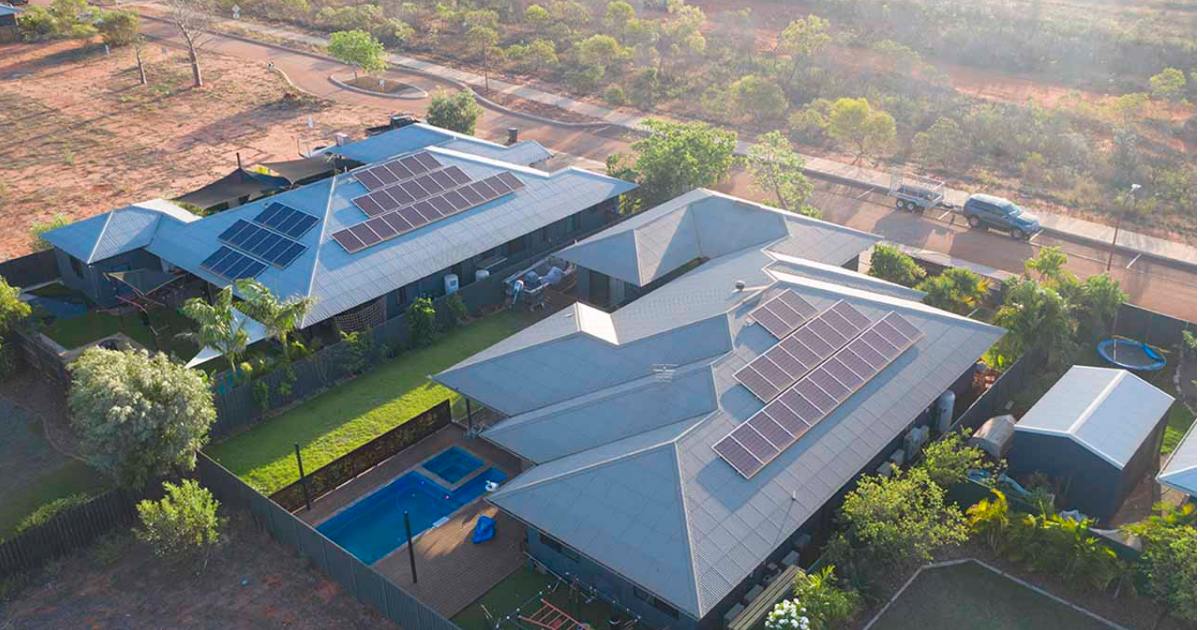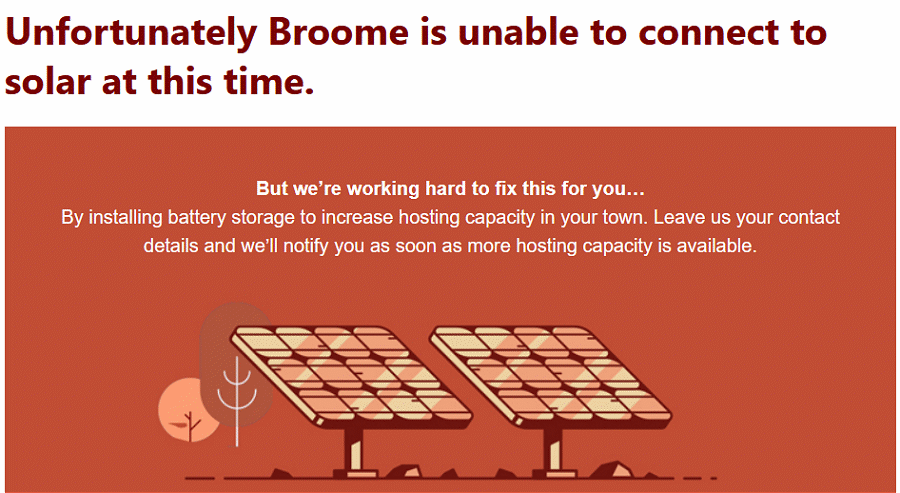The rollout of Horizon Power’s Distributed Energy Resources Management System (DERMS) starting next year will enable regional microgrids in WA to host more solar power systems. Hopefully this time around spare capacity won’t be just a flash in the pan.
There’s no shortage of folks in regional Western Australian towns such as Broome wanting to install solar panels. The problem is local networks keeps hitting limits in terms of hosting capacity. It’s been an off and on problem in Broome for years – mostly on.
Horizon Power released a combined 3MW of additional solar hosting capacity across Broome, Esperance, Hopetoun, Carnarvon, Denham and Exmouth last year, then 1.1MW for business and another 300kW capacity for residential customers in March this year. This was snapped up pretty quickly in most places.
Residents of Broome checking if they can install solar panels are seeing this message currently:
The same is generated for Esperance, Carnavon, Denham and Exmouth residents – and likely other towns. As for Hopetoun folks, get in while you can – or you may be waiting a while!
Solar Energy Access For All By 2025
Horizon Power has set a target of enabling all households that want to install solar panels to be able to do so by 2025. Part of making this happen is the installation of batteries – but also rollout of Horizon’s Distributed Energy Resources Management System (DERMS).
A software-based approach, DERMS allows Horizon to communicate with and orchestrate thousands of grid-connected Distributed Energy Resources (DERs) in real-time to help balance supply and demand, and keep regional microgrids stable. Among its whiz-bang features, DERMS incorporates predictive analytics – including weather pattern analysis.
DERMS will be rolled out in Broome in early 2023 and then to other regional microgrids by mid-2024.
“This is very exciting for the Broome community, as it will allow more households to embrace rooftop solar – and other clean energy technologies,” said Kimberley MLA Divina D’Anna. “The Kimberley is one of the sunniest regions in Western Australia, so this is a great opportunity for the community to be leaders in the transition to net zero emissions by 2050.”
So, how much extra hosting capacity can DERMS provide? Will this be another case of a short-lived feast followed by a long famine?
The WA Government says when the DERMS system was briefly trialled last year for the Onslow microgrid, it demonstrated more than four times the amount of rooftop solar could be installed compared to a traditional energy system. It’s worth noting Onslow residents wanting to go solar currently are also in the same boat as those in Broome and elsewhere. No new solar for you (yet).
WA Energy Minister Bill Johnston has high hopes for the DERMS rollout.
“It is an exciting time for the energy industry – with the McGowan Government supporting the evolution of the sector towards a cleaner, greener energy future,” he said.
In other recent renewables related news out of Western Australia, yesterday we reported the first battery modules for the Kwinana BESS – WA’s biggest battery to date – have been installed. It’s expected the 100MW/200MWh project will be up and running by the end of this year.



 RSS - Posts
RSS - Posts



Speak Your Mind